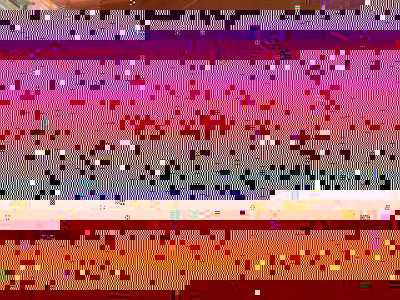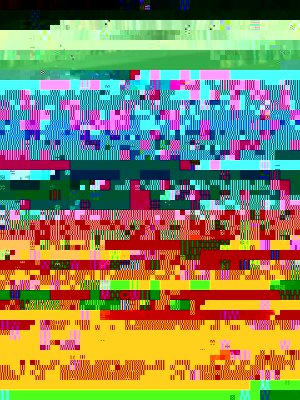johnsonad
New member
This project started with a pair of 300B's I couldn't use in the BeePre, the EML 300B mesh plate. They were too nice not to use so I decided to build an amp around them. I had previously owned Paramounts and knew how good the amp was but always thought it could be pushed a little more than the original design. In corresponding with PJ over the years there where areas to explore without grossly changing the original design. I'm not sure what to call them but they are on the theme of Paramount.
The chassis plate is built for mods sizing up at 12"x18". There is plenty of room to work and room enough for mods in the future. The larger plate also allows for greater distance from the power supply (PS) to the output stage. The top plate and the transformer bell ends were power coated black wrinkle in keeping with my other BH projects. The PF cap was rattle can painted in a similar black wrinkle. The bases are an extra long kiln dried maple giving them a smoked appearance with a semi gloss polyurethane finish. A big thanks to John at Harmonic Design Inc who made the bases and makes the BH bases. He really went the extra mile to get these right.
The power supply design is detailed in another thread, a simple CLC using the stock capacitance and a lot of induction (BH iron). The power supply ripple is less than 1mV according to sims. The added inductance gives the needed voltage drop for the operating point.
I chose the 350v, -76v, 50mA, 5k operating point from the WE data sheet for a couple reasons. First, to hear a 300B with a 5k output transformer (OPT) and not just any but the Magnequest EXO-050. It has the headroom to run the 300B into the lower bass without giving up the go and has one of Mikey's more advanced windings. Second, to take advantage of another piece of MQ iron, the Dowdy plate choke. In this amp they are gapped for 60mA with 80H of inductance. And lastly, this operating point has one of the lowest second and third harmonic distortion measurements of those listed by WE and at 50mA, I'm ensured long life from the EML's.
The driver stage uses the soft start board with a simple mod for top mounted bias adjustment. The 10k pot is super glued to the top plate and wired to the board. The test point is also wired to the top plate via a tip jack. There is another tip jack at star ground (thank you Grainger). In this configuration I'm able to swap driver tubes and quickly bias them without flipping the amps. I started with the 5670 and listened to my entire stash of tubes (a dozen different pairs). There was just something missing and in looking over old posts and with the help once again from PB and PJ I switched to the 6SN7 and haven't looked back. There are other variants out there that I may try in the future but for now, I'm very happy with the 6SN7.
The output stage uses a MQ high nickel grid choke instead of the resistor. The cathode bypass resistor is a Caddock thick film mounted to a heat sink (PJ's idea). The cathode bypass capacitor is one that Steve (Ironbut) posted about and is 100uF film to possibly get a little more bass. There is a V-Cap Copper Teflon coupling cap and the parafeed (PF) capacitor is a Russian KBG PIO. The hum pot is a ten turn type and much easier to find the sweet spot with. There is a switch between the PF cap and OPT to ground. It's set to ground as the amp warms up and after 30 seconds or so I switch it to the OPT to prevent magnetization. Otherwise it's a nearly by the numbers Paramount build.
Operation-wise the circuit seems to be idling. The cathode bypass resistor heat sink stays at 100F and the power transformer is cool enough to continually hold. There are zero hot or warm spots on the chassis plate.
So how do they sound? Well they sound great. I've been listening to them for a couple of months now and have a good feel for them. Needless to say but these amps aren't going anywhere.
More to follow in future posts and thank you again to everyone who has helped me with this build.
The chassis plate is built for mods sizing up at 12"x18". There is plenty of room to work and room enough for mods in the future. The larger plate also allows for greater distance from the power supply (PS) to the output stage. The top plate and the transformer bell ends were power coated black wrinkle in keeping with my other BH projects. The PF cap was rattle can painted in a similar black wrinkle. The bases are an extra long kiln dried maple giving them a smoked appearance with a semi gloss polyurethane finish. A big thanks to John at Harmonic Design Inc who made the bases and makes the BH bases. He really went the extra mile to get these right.
The power supply design is detailed in another thread, a simple CLC using the stock capacitance and a lot of induction (BH iron). The power supply ripple is less than 1mV according to sims. The added inductance gives the needed voltage drop for the operating point.
I chose the 350v, -76v, 50mA, 5k operating point from the WE data sheet for a couple reasons. First, to hear a 300B with a 5k output transformer (OPT) and not just any but the Magnequest EXO-050. It has the headroom to run the 300B into the lower bass without giving up the go and has one of Mikey's more advanced windings. Second, to take advantage of another piece of MQ iron, the Dowdy plate choke. In this amp they are gapped for 60mA with 80H of inductance. And lastly, this operating point has one of the lowest second and third harmonic distortion measurements of those listed by WE and at 50mA, I'm ensured long life from the EML's.
The driver stage uses the soft start board with a simple mod for top mounted bias adjustment. The 10k pot is super glued to the top plate and wired to the board. The test point is also wired to the top plate via a tip jack. There is another tip jack at star ground (thank you Grainger). In this configuration I'm able to swap driver tubes and quickly bias them without flipping the amps. I started with the 5670 and listened to my entire stash of tubes (a dozen different pairs). There was just something missing and in looking over old posts and with the help once again from PB and PJ I switched to the 6SN7 and haven't looked back. There are other variants out there that I may try in the future but for now, I'm very happy with the 6SN7.
The output stage uses a MQ high nickel grid choke instead of the resistor. The cathode bypass resistor is a Caddock thick film mounted to a heat sink (PJ's idea). The cathode bypass capacitor is one that Steve (Ironbut) posted about and is 100uF film to possibly get a little more bass. There is a V-Cap Copper Teflon coupling cap and the parafeed (PF) capacitor is a Russian KBG PIO. The hum pot is a ten turn type and much easier to find the sweet spot with. There is a switch between the PF cap and OPT to ground. It's set to ground as the amp warms up and after 30 seconds or so I switch it to the OPT to prevent magnetization. Otherwise it's a nearly by the numbers Paramount build.
Operation-wise the circuit seems to be idling. The cathode bypass resistor heat sink stays at 100F and the power transformer is cool enough to continually hold. There are zero hot or warm spots on the chassis plate.
So how do they sound? Well they sound great. I've been listening to them for a couple of months now and have a good feel for them. Needless to say but these amps aren't going anywhere.
More to follow in future posts and thank you again to everyone who has helped me with this build.





